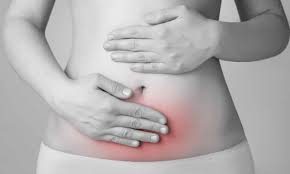by Dr Juanita Fuchs (Acupuncture)

Endometriosis is a condition that is estimated to affect 10-15% of menstruating women between the ages of 24 and 40 years old. It is usually characterized by severe abdominal and/or pelvic pain around menstruation and during intercourse, and can impair fertility. Although the pain experienced with endometriosis can be debilitating, the severity of the pain may not be a reliable indicator of the extent of the condition. Some women could have mild endometriosis with severe pain, or they could have advanced endometriosis with little or no pain.
So what exactly is Endometriosis?
The root of the word “Endometriosis” comes from the word for the lining of the uterus, the endometrium. In endometriosis, the endometrium’s tissue becomes displaced and grows outside the uterine cavity. The most common location is on the ovaries, but it can occur anywhere within the peritoneal cavity.
Why is endometriosis so painful?
The displaced endometrial tissue can respond to hormonal stimuli and also bleed during the menstrual phase, despite not being located within the uterus. When this blood accumulates in these tissues, it promotes swelling and activation of inflammatory pain-producing chemicals called cytokines. Endometrial tissue can also promote the development of scar tissue and adhesions to other organs like the bowels, fallopian tubes, uterus, ovaries, and bladder. When these organs are bound together by the adhesions, it can promote painful sensations throughout the abdomen.
What causes endometriosis?
Contrary to popular belief, endometriosis is not a hormonal condition. It is affected by oestrogen, however it is not caused by oestrogen or “oestrogen dominance”. Instead, recent research points to endometriosis as being a chronic inflammatory and immune system disease1, and possibly a microbial disease. In fact, many clinicians and researchers have questioned if endometriosis should be labelled as an autoimmune disorder2.
Risk Factors for Endometriosis
• Having a first-degree relative who has endometriosis (sister, mother, daughter)
• Having an autoimmune disorder
• Having IBS/IBD and/or other gastrointestinal disorders – the microbiome (good bacteria) plays a role
• Having a history of lower genital tract infections
• Having allergies and histamine-related issues
• Exposure to pesticides and dioxins3
Conventional Western medicine treatment
• Surgical excision of the lesions (laparoscopy) is effective for both pain and fertility and is the gold-standard of treatment. Unfortunately, the lesions grow back within five years about 50 percent of the time which is why surgery is usually followed by hormonal suppression.
• Hormonal suppression with birth control works by shutting down ovulation and inducing oestrogen deficiency. Oestrogen deficiency slows the growth of the lesions, but it does not cure the disease. It can have side effects including depression and bone loss.
• Mirena intrauterine device (IUD) works locally to suppress the uterine lining and endometriosis lesions. It is preferable to other methods of hormonal birth control because it doesn’t shut down ovulation or cause oestrogen deficiency.
Traditional Chinese medicine treatment
• After a thorough assessment of your history, questioning and observation of your tongue and pulse, we identify the pattern you are presenting with to determine the best course of treatment
• Improvement in blood flow, reduction in pain, hormone regulation and stress relief are all considerations when choosing acupuncture point selection
• Chinese herbal medicine is essential to address both the symptoms (predominantly blood stagnation) and the root cause (how you present constitutionally). When prescribed properly, studies have shown Chinese herbs4 to be more effective than some drug therapies in relieving pain and shrinking adnexal masses
• Diet plays a big part in how endometriosis presents, grows and fades – Chinese dietary guidelines are a vital component of treatment
What can you do?
• Reduce inflammatory foods in your diet
• Avoid gluten5
• Eliminate chemical environmental oestrogens where possible i.e. pesticides and herbicides (eat organic where possible), plastics, conventional beauty products, and household cleaners
• Reduce stress where possible by implementing de-stressing techniques into your daily life such as deep breathing, meditation, exercise and journaling
If you have been struggling with endometriosis or if you’re interested in finding out how we can help, please do not hesitate to be in touch.
Dr Juanita Fuchs (Acupuncture)
Morningside Healing Sanctuary
March 2022
1. The role of the B lymphocytes in endometriosis: A systematic review | EndoNews
2. The link between immunity, autoimmunity and endometriosis: a literature update – PubMed (nih.gov)
3. Dioxin and Endometrial Progesterone Resistance (nih.gov)
4. Chinese herbal medicine for endometriosis – PubMed (nih.gov)

